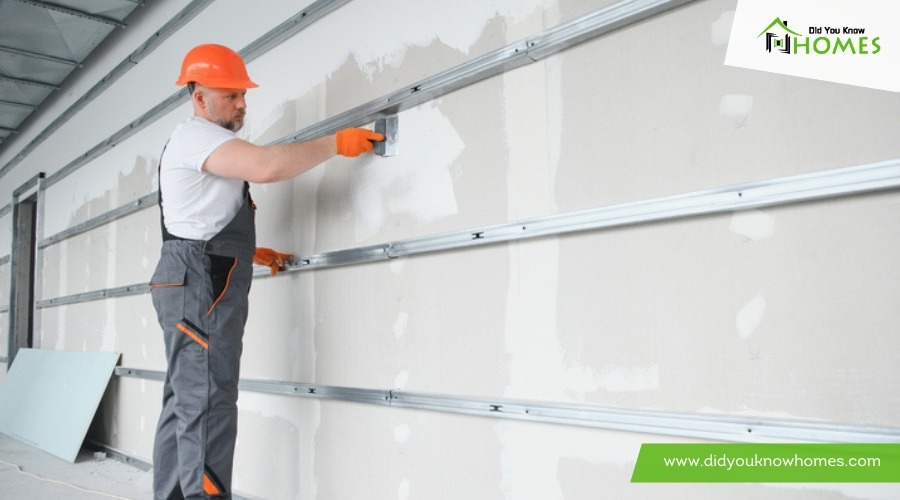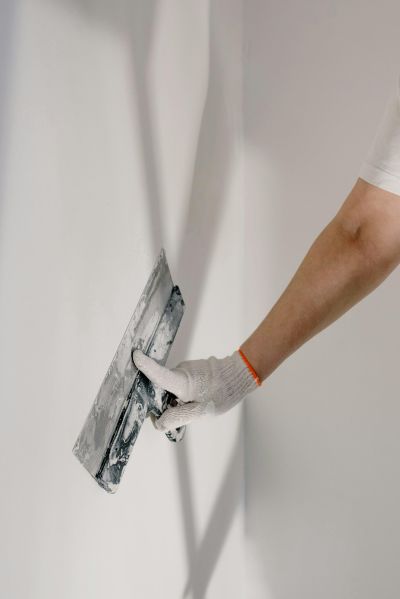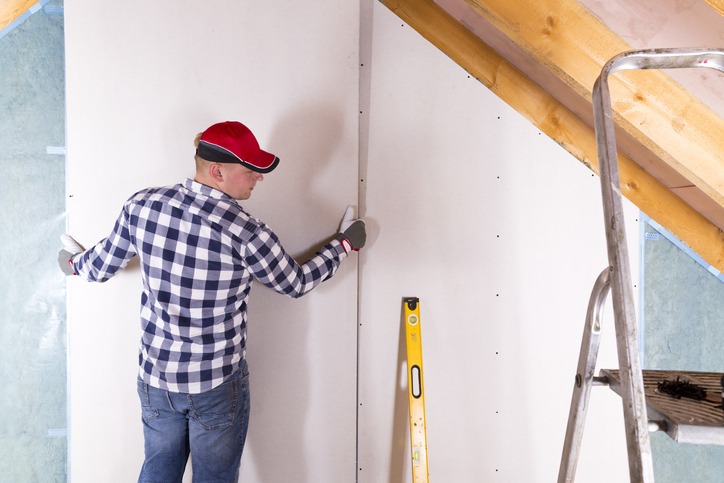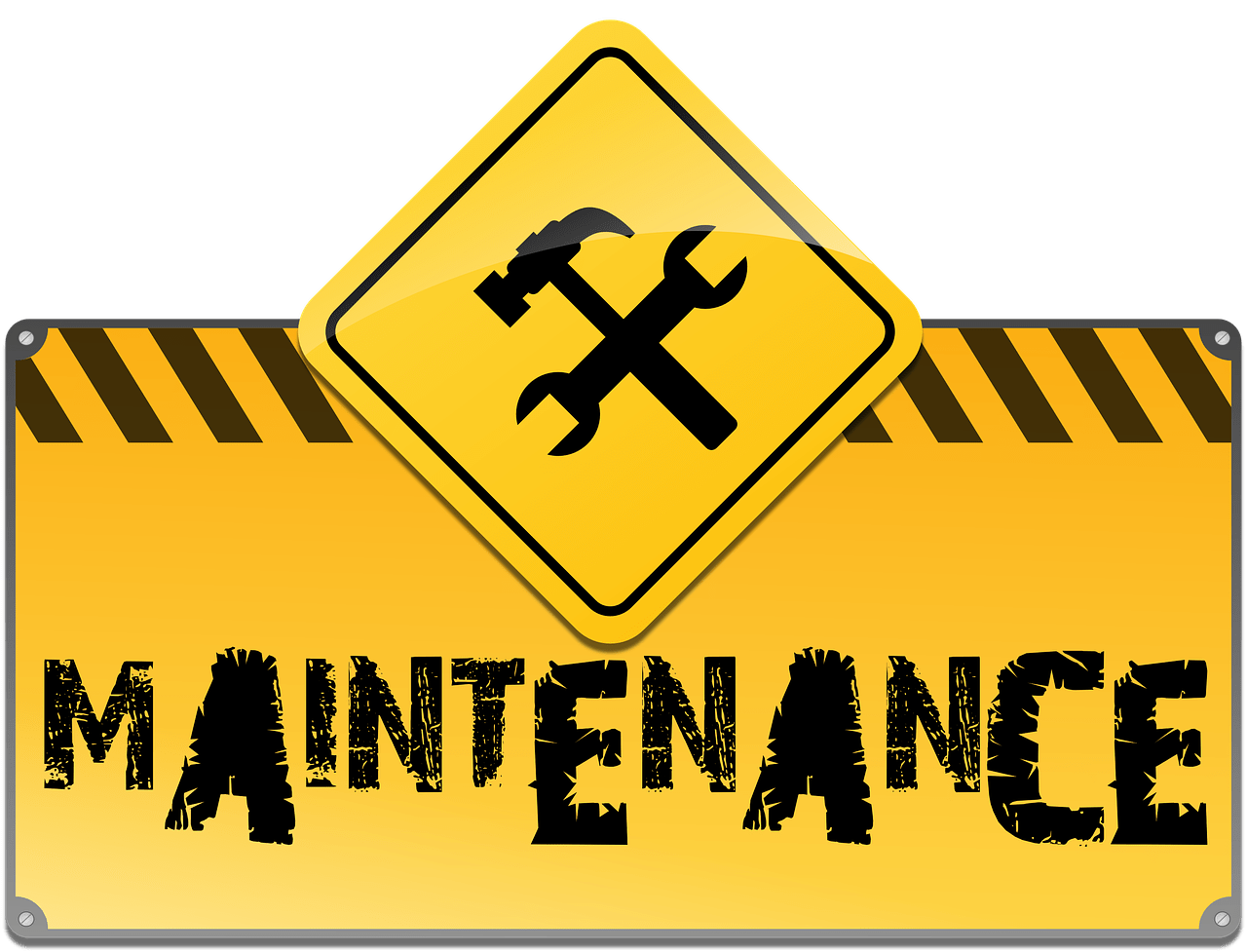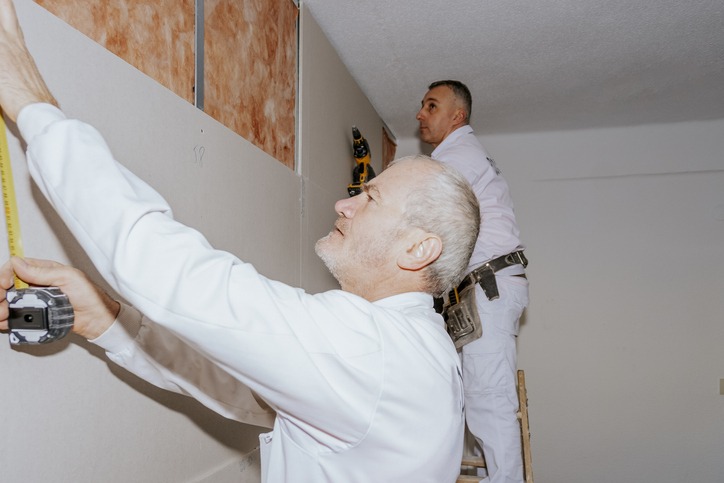Choosing between drywall and plaster for your home is akin to deciding whether to climb Everest or Kilimanjaro—both are formidable tasks, yet each offers unique rewards. You’re facing a decision that involves weighing the historical charm and superior soundproofing of plaster against the modern, cost-effective, and quicker installation benefits of drywall. As you navigate this maze of materials, durability, and cost, it’s important to think about which aspects are non-negotiable for your living space. Stick around, and you’ll uncover insights that might just tip the scales in favor of one over the other, ensuring your home meets both your aesthetic and practical needs.
Understanding Plaster
Crafted from a mix of cement, sand, water, and minerals, plaster offers a durable and fire-resistant option for your home’s walls. This traditional method, dating back to 7500 BC, involves applying several layers of plaster over laths—strips of wood or metal—to create a strong, seamless surface. Unlike more modern materials, plaster requires time and skill to apply, especially when achieving a polished finish or accommodating curved walls.
The process starts with attaching laths to the wood studs in your walls, creating a base for the plaster to grip. Then, a coat of plaster is applied, embedding the lath in a gypsum-based mixture that hardens as it dries. This layering technique not only enhances the wall’s structural integrity but also improves thermal insulation and soundproofing.
Plaster’s thickness and composition contribute significantly to its energy efficiency, keeping your home warmer in the winter and cooler in the summer. Its high soundproofing properties mean you’ll enjoy quieter, more serene living spaces. While plaster may be more expensive and labor-intensive than alternatives, its benefits in durability, fire resistance, and aesthetic appeal make it a worthwhile investment for many homeowners.
Benefits of Drywall
When you’re considering the benefits of drywall for your home, it’s clear that cost efficiency, easy installation, and versatile design options stand out. You’ll find that its affordability doesn’t compromise on quality, making it a smart choice for budget-conscious homeowners. Additionally, its ease of customization allows for a tailored look in every room, offering both practicality and aesthetic appeal.
Cost Efficiency
When it comes to cost efficiency, drywall stands out as a more affordable option for your home compared to plaster, thanks to its lower material and labor costs. The affordability of drywall makes it a budget-friendly choice, especially when you’re mindful of your home construction or renovation expenses. Unlike plaster walls, which can be pricey due to the skilled labor required for installation, drywall offers a quicker and simpler setup. This not only reduces overall project expenses but also cuts down on labor time. Additionally, the DIY-friendly nature of drywall repairs further enhances its cost efficiency, allowing you to save even more. Overall, opting for drywall over plaster walls can greatly ease your budget without compromising on quality.
Easy Installation
Building on its cost efficiency, drywall also offers the added advantage of easy installation, making it a favorite for quick home renovations. Compared to plaster, the benefits of choosing drywall are clear when it comes to getting the job done with less hassle and more speed. Here’s why:
- Cut to Size: Easily tailor drywall panels for windows, doors, and outlets, speeding up the construction process.
- Light and Manageable: Drywall’s lighter weight makes it simpler to transport and handle.
- DIY-Friendly: Basic tools and techniques are all you need, empowering you to take on the project yourself.
- Labor Cost Savings: The quicker installation process of drywall can significantly reduce labor costs, as opposed to the more labor-intensive plaster application.
Versatile Design Options
Offering a canvas of endless possibilities, drywall transforms any room with its versatile design options. Unlike plaster, drywall provides a myriad of textures, from orange peel to smooth finishes, allowing you to tailor the look and feel of your space. You can easily customize it with a range of paint colors, wallpaper, or decorative treatments to match your unique style. Drywall’s ability to be cut to specific dimensions for windows, doors, and outlets enhances the overall aesthetic, making it an ideal choice for contemporary homes. The flexibility of drywall supports modern and sleek interior designs, delivering the perfect backdrop for any decor. It’s this combination of versatile design capabilities and ease of installation that makes drywall a popular choice for today’s homes.
Installation and Maintenance
Choosing between drywall and plaster for your home involves considering their distinct installation processes and maintenance needs. Here’s what you need to know:
- Installation: Plaster installation is more labor-intensive, requiring the application of several layers over laths to create walls with high tensile strength, perfect for curved designs. Drywall, on the other hand, is quicker to install. It’s cut to size and fitted around windows and outlets for a precise and smooth finish.
- Durability and Maintenance: Plaster boasts superior durability but comes with higher maintenance demands. If damaged, it often requires professional repair, unlike drywall, which can be easily fixed with simple repair kits for minor issues.
- Soundproofing and Thermal Insulation: While drywall offers excellent thermal insulation, making your home more energy-efficient, plaster provides better soundproofing, reducing sound transmission between rooms.
- Ease of Repair: Drywall’s ease of repair stands out. Small damages can be fixed by homeowners themselves using store-bought drywall repair kits, making it a practical choice for those looking for low-maintenance options.
Cost Analysis
After considering the installation and maintenance differences between drywall and plaster, it’s important to examine how each option impacts your budget. When you delve into the cost analysis, you’ll find that drywall installation is generally more budget-friendly per square foot compared to plaster. This is largely due to the labor costs involved. Skilled plasterers command higher rates for their work than drywall installers, making plaster installation typically more expensive.
The reason behind this is twofold: first, plastering requires a higher level of craftsmanship and takes more time to apply and finish. Second, the materials, while not vastly more expensive, contribute to the overall higher cost when combined with the labor. This makes drywall not only a more cost-effective option for wall finishing but also a more straightforward choice for those looking to keep installation costs low.
Soundproofing and Insulation
When deciding between drywall and plaster for your home, it’s important to think about how each material impacts soundproofing and insulation. Here’s a quick rundown to help you weigh your options:
- Plaster’s Superior Soundproofing: Thanks to its density and thickness, plaster is a champ at blocking sound transmission. If you’re aiming for quiet spaces in your home, plaster walls could be your best bet. It’s particularly effective in minimizing noise, making it ideal for bedrooms, home offices, or any area where tranquility is a priority.
- Drywall for Thermal Insulation: Drywall, when paired with modern insulation materials, excels in providing thermal insulation. This flexibility means you can easily enhance your home’s warmth and energy efficiency, especially during retrofitting projects.
- Retrofitting Challenges with Plaster: If you’re considering retrofitting your home for better insulation, plaster might present some hurdles due to its rigid nature. Unlike drywall, adding layers of insulation to existing plaster walls can be a complex task.
- Drywall’s Insulation Adaptability: With its inherent flexibility, drywall offers a straightforward solution for incorporating additional insulation. This adaptability is great for improving your home’s thermal insulation without extensive modifications.
Choosing between drywall and plaster involves considering your priorities for soundproofing and insulation alongside other factors.
Aesthetic and Functional Comparisons
Exploring the aesthetic and functional aspects of drywall versus plaster can greatly impact your home’s visual appeal and practicality. Plaster, with its ability to offer a polished look and various textures, elevates the aesthetic of any space, making it ideal for those seeking a high-end decor. Its versatility in finishes means you’re not limited in how you can enhance the overall appeal of your home. Additionally, plaster’s resilience makes it less prone to damage, ensuring your walls maintain their pristine appearance for longer.
On the other hand, drywall is celebrated for its ease of installation and minimalist look, positioning it as a cost-effective choice for many. While it provides design options like the orange peel texture, achieving a truly smooth finish can be more challenging compared to plaster. Drywall shines in settings with straight walls, offering a modern and sleek appearance, but for curved walls, plaster takes the lead due to its flexibility.
Conclusion
To sum up, when you’re deciding between drywall and plaster for your home, it’s all about what matters most to you. If you’re looking for quick installation and cost efficiency, drywall’s your best bet. However, if soundproofing, energy efficiency, and a touch of historical charm top your list, plaster might be the way to go. Both have their unique advantages, so weigh the pros and cons based on your specific needs. Ultimately, the choice is yours to make for your home’s comfort and style.

